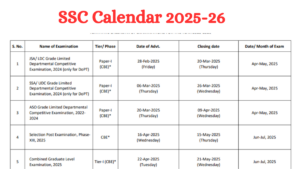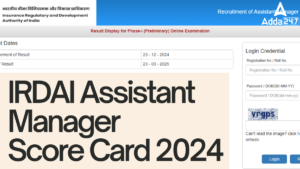Q1. Ratio of the fares of First, Second and Third class category of a train between two stations is 10 : 7 : 2 and the ratio of passenger travelling in these category is 4 : 9 : 17 respectively. The fare is increased by ¼ in First class, 1/8 in Second class and decreased by 10% in Third class and the ratio of number of passenger in these category remains same. If the new collection received is Rs. 60590, then find the total amount received from third class category.
(a) 13280
(b) 15400
(c) 12240
(d) 12000
(e) None of these
Directions (Q2- Q3): Cities M and N are 600 km apart. Bus A starts from city M towards N at 9 am and bus B starts from city N towards M at the same time. Bus A travels the first 1/3rd of the distance at a speed of 40 kmph, the second 1/3rd at 60 kmph and the third 1/3rd at 50 km/hr. Bus B travels the first 1/3 rd of the total distance at a speed of 60 kmph, the second 1/3 rd at 40 kmph and the third 1/3rd at 50 km/hr.
Twisted Ones Quantitative Aptitude Questions for IBPS RRBs PO Exam 2017
Dear Readers,
Practice is the key to perfection in Quant, so brush up your skills and test yourself with these 15 questions of Twisted Ones Quantitative Aptitude for IBPS RRBs PO and Clerk 2017.
Q2. When and where will the two buses cross each other?
(a) 6 hrs, 320 kms from N
(b) 5 hrs 20 minutes, 240 kms from N
(c) 6 hrs 20 minutes, 280 kms from M
(d) 4 hrs, 240 kms from M
(e) None of these
Q3. What are the approximate average speeds of Bus A and Bus B?
(a) 48.64 km/hr , 48.64 km/hr
(b) 50 kmph, 48.64 km/hr
(c) 40 kmph, 50 kmph
(d) 48.64 km/hr, 50 km,hr
(e) None of these
Q4. A and B start a business with investments of Rs. 5000 and Rs. 4500 resepctively. After 4 months, A takes out half of his capital. After two more months, B takes out one-third of his capital while C joins them with a capital of Rs. 7000. At the end of a year, they earn a profit of Rs. 5080. Find the share of each member in the profit.
(a)Rs 1600, Rs 1800, Rs. 1780
(b)Rs 1600, Rs 1800, Rs. 1680
(c)Rs 1400, Rs 1800, Rs. 1680
(d)Rs 1600, Rs 1900, Rs. 1680
(e) None of these
Q5. Quantity I: Overall profit percentage if the cost prices of two shirts are equal. One shirt is sold for 20% profit and the other is sold for 10% loss.
Quantity II: Profit % made in selling each meter if the profit made in selling 20 m of a cloth equals the cost price of 5 m of that cloth.
(a) Quantity I > Quantity II
(b) Quantity I < Quantity II
(c) Quantity I ≥ Quantity II
(d) Quantity I ≤ Quantity II
(e) Quantity I = Quantity II or No relation
Q6. The largest possible right circular cylinder is cut out from a wooden cube of edge 7 cm.
Quantity I: volume of the cube left over after cutting out the cylinder
Quantity II: Surface area of cube remained after cutting out the cylinder.
Note: compare the magnitudes of both quantities.
(a) Quantity I > Quantity II
(b) Quantity I < Quantity II
(c) Quantity I ≥ Quantity II
(d) Quantity I ≤ Quantity II
(e) Quantity I = Quantity II or No relation
Q7. Quantity 1: Value of y. A vessel contains 2.5 liters of water and 10 liters of milk. 20% of the contents of the vessel are removed. To the remaining contents, x liters of water are added to reverse the ratio of water and milk. Then y liters of milk are added again to reverse the ratio of water and milk.
Quantity 2: 120 ltr.
(a) Quantity I > Quantity II
(b) Quantity I < Quantity II
(c) Quantity I ≥ Quantity II
(d) Quantity I ≤ Quantity II
(e) Quantity I = Quantity II or No relation
Q8. P can complete a piece of work in 16 days which Q can complete in 32 days. P and Q work on alternate days.
Quantity 1: Time taken by them to complete the work if P starts on day 1.
Quantity 2:Time taken by them to complete the work if Q starts on day 1.
(a) Quantity I > Quantity II
(b) Quantity I < Quantity II
(c) Quantity I ≥ Quantity II
(d) Quantity I ≤ Quantity II
(e) Quantity I = Quantity II or No relation
Q9. A father left a wealth of Rs. 68,000 to be divided between two sons aged 10 years and 12 years such that they may get equal amount when each attains the age of 18 years. If the money is reckoned at 10% per annum. What was the difference between the amount each received?
(a)4000
(b)5000
(c)4500
(d)3500
(e)None of these
Directions (Q 10 -11): There are four boxes. Each box contains two balls. One red and one blue. You draw one ball from each of the four boxes.
Q10. What is the probability of drawing at least one red ball ?
(a) 13/16
(b) 15/16
(c) 9/16
(d) 11/16
(e) None of these
Q11. If in each bag a green ball is added, then find the probability of drawing at least one blue ball ?
Q12. A video Magazine distributor made 3500 copies of the June issue of the magazine at a cost of Rs. 3,50,000. He gave 500 cassettes free to some key video libraries. He also allowed a 25% discount on the market price of the cassettes and gave one extra cassette free with every 29 cassettes bought at a time. In this manner, he was able to sell all the 3500 cassettes that were produced. If the market price of a cassette was Rs. 150, then what is his gain or loss % for the March June issue of the video magazine?
(a) 3.4% loss
(b) 15% gain
(c) 40% gain
(d) 6.8% loss
(e) None of these
Directions (Q13- 14): A is thrice as good a workman as B and therefore is able to finish a job in 60 days less than B. If A and B complete 2/3 rd of the job and then A is replaced by C, the remaining job is done by B and C in 10 days. If A and B complete 3/4th of the job and then B is replaced by D the remaining job is done by A and D in 5 days.
Q13. How long will it take for A, B, C and D to complete the job working together?
(a) 12 days
(b) 20 days
(c) 15 days
(d) 14 days
(e) None of these
Q14. The job is completed in the following manner: A and B work on day 1, B and C work on day 2, C and D work on day 3,D and A work on day 4 and so on. How long will it take for the job to be completed in this manner?
(a) 25 days
(b) 24 days
(c) 22 days
(d) 30 days
(e) None of these
Q15. In a conference hall there are people in blue and red dresses. The ratio of no. of women in blue to the number of men in red is 3 : 2 and the ratio of the number of men in blue to the number of women in red is 3 : 5. If the ratio of the number of people in blue to the number of people in red is 21 : 23, then what is the ratio of the number of men to the no. of women in the conference hall?
(a)19 : 21
(b)21 : 29
(c)17 : 27
(d)Cannot be determined
(e)None of these
You may also like to Read:





 The Hindu Review October 2022: Download ...
The Hindu Review October 2022: Download ...
 SSC Calendar 2025-26 Out, Check SSC CGL,...
SSC Calendar 2025-26 Out, Check SSC CGL,...
 IRDAI Assistant Manager Score Card 2024 ...
IRDAI Assistant Manager Score Card 2024 ...




